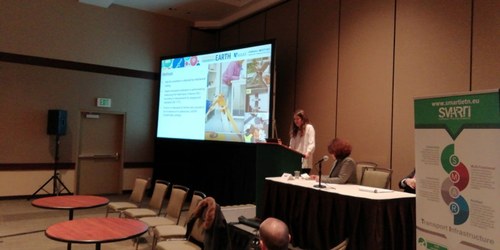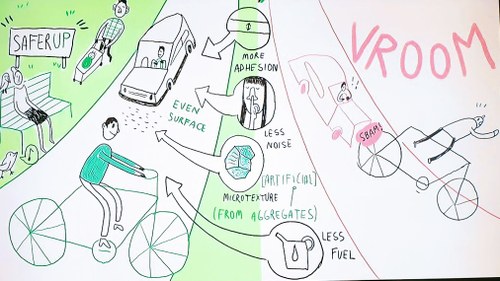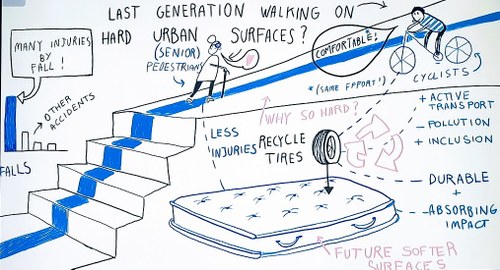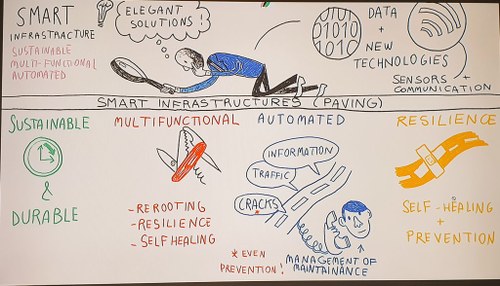Cesare Sangiorgi gave a talk on Saving Lives and Ears with High Friction and Acoustic Pavements.
The urban environment naturally encompasses users of different kind: vehicles, cyclists, pedestrians. These interact at intersections where traffic rules guarantee their safe circulation. Nevertheless, car-pedestrian/cyclist accidents are one of the main causes of fatalities in modern cities and towns. The proposed talk aims to present a novel type of pavement that merges the benefit of reducing breaking distance with high friction and those of reducing pass-by noise of vehicles.
The talk was live-illustrated by the artist of ERCComics!
This research is the focus of the ESR1 project.




